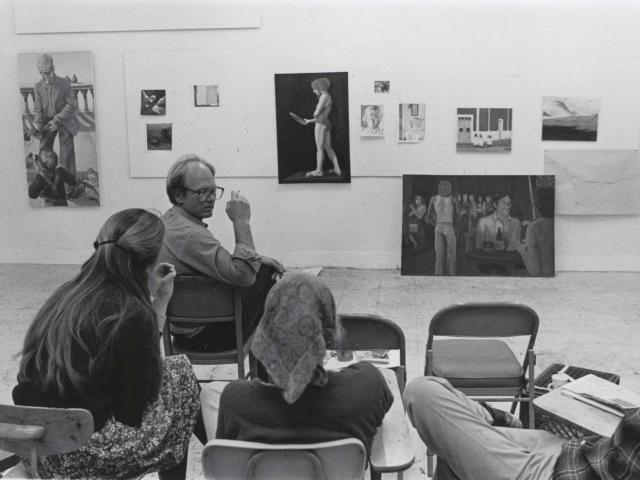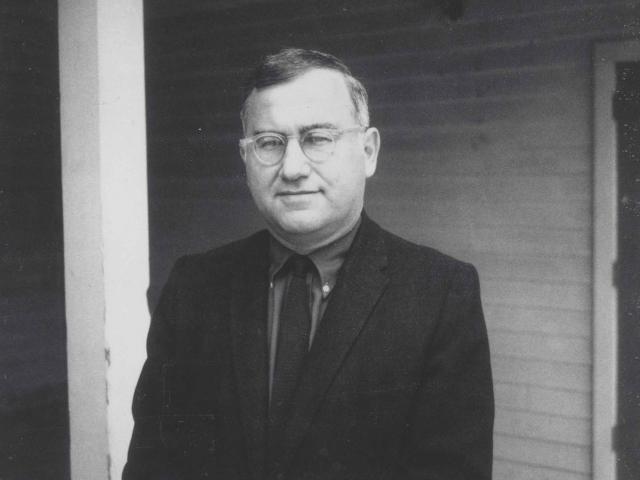The Little College that Could
UCSB College of Creative Studies celebrates 50 years
by Hana-Lee Sedgwick for Santa Barbara Seasons

Though it’s the smallest of the three colleges at UCSB, the College of Creative Studies is a thriving community of faculty and students now celebrating its 50th year. Designed as a college for students ready to immerse themselves in their chosen area of discipline from the onset, the College of Creative Studies (CCS) offers a less conventional approach to education, based on independent learning and research.
The idea for the College began back in 1965 when Chancellor Vernon I. Cheadle commissioned Dr. Marvin Mudrick, Professor of English, to serve as Academic Planner for the UCSB campus. Tasked with proposing a long-range academic plan for the growth of campus, Mudrick went to work on several ideas. Knowing Cheadle’s interest in a special college that would serve a small portion of the student population, he proposed a plan for just that: a separate college at the university, independently staffed and administered, with a specially selected student body. The idea was that these students would not only need to meet the UC entrance requirements, but also demonstrate talent for original work in art or science.” Chancellor Cheadle gave Mudrick the opportunity to invent a different approach to college in CCS that would let unnaturally focused and dedicated students literally create new knowledge in their chosen passion,” explains Bruce Tiffney, Dean Emeritus & Biology Faculty.
The proposal was approved by the Regents in February 1967 and by fall that same year, the College opened with an enrollment of 50 students. “CCS started as an innovative college to draw unusual and committed students to UCSB at a time when, honestly, UCSB was everyone’s backup school,” shares Tiffney. “Of course, over time, the reputation of UCSB grew tremendously and the college has become more and more widely known for the demanding and rigorous freedom it gives the fascinated student.”

Originally housed in a very small Marine barracks building next to the library—a relic of WWII when the campus was a seaside military base—CCS moved to its present site, still a former Marine barrack, but a larger one, in the fall of 1975.
While other “experimental” colleges established during this era at universities across the country have come and gone, CCS remains true to its mission of providing talented and imaginative undergraduates with the intellectual, collaborative environment to be challenged and stimulated. “CCS offers an immersive, accelerated experience with a goal of participating in the creation of new knowledge or creative work,” shares Kathy Foltz, Interim Dean, College of Creative Studies. “Students meet with a faculty adviser regularly to discuss interests, the academic plan and career goals, and instead of grades, student work is evaluated in a way that translates to units. This encourages risk taking and, coupled with the experience gained through conducting research or creative work, students learn how to learn.” She adds, “This approach was ‘radical’ in 1967, but it has worked for 50 years now! CCS is unique because it offers a student an intellectual home where they can work with others who may have varied interests, but who wish to collaborate and interact.”
With just 385 students, CCS remains a small yet mighty place for students to pursue advanced studies within eight different majors, from math and computing to art and music composition. “CCS allows a student to get her hands dirty early, where the novelist writes, and the scientist does original research. It is a place where failure is merely a rite of passage, not a disaster,” says Tiffney. “What an honor, for all of us as mentors, to be involved with such young people at UCSB, full of the greatness of heart and the nobility of effort that may transform and save our world.”
This story was originally published in the Fall 2018 issue of Santa Barbara Seasons Magazine.